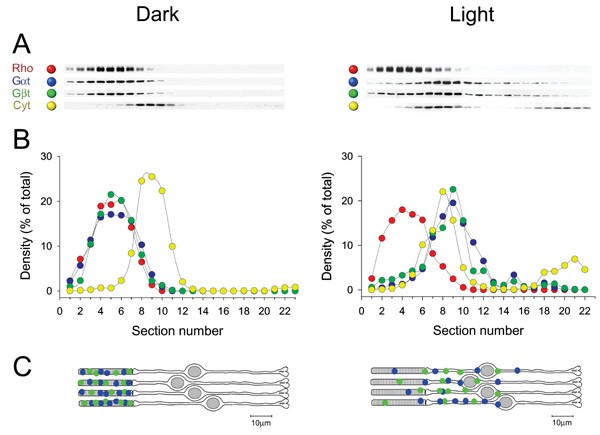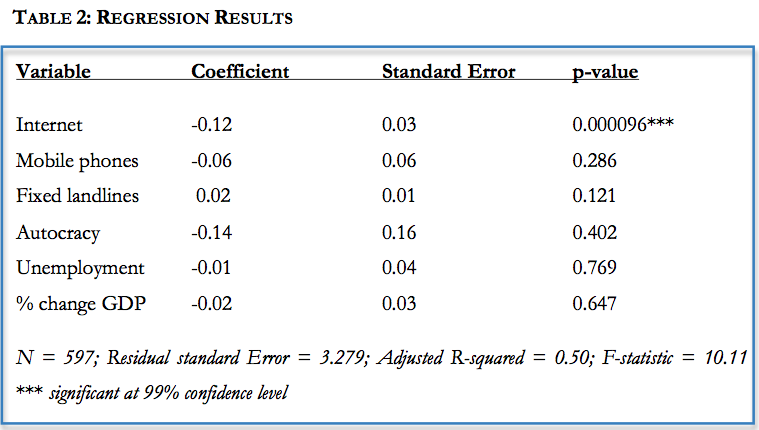Quantitative Analysis
Post on: 4 Апрель, 2015 No Comment

Quantitative Analysis of Managed Futures
Managed futures comprise a diverse collection of active hedge fund trading strategies which specialize in liquid, transparent, exchange-traded futures markets and deep foreign exchange markets. Some of the approaches taken by managed futures managers exploit the sustained capital flows across asset classes that typically take place as markets move back into equilibrium after prolonged imbalances. Others thrive on the volatility and choppy price action which tend to accompany these flows. Others do not exhibit sensitivity to highly volatile market environments and appear to generate returns independent of the prevailing economic or volatility regime. This explains in part why managed futures often outperform traditional long-only investments and most alternative investment and hedge fund strategies during market dislocations and macro events.
This paper endeavors to re-introduce managed futures as a liquid, transparent hedge fund sub-style which actively trades a diversified mix of global futures markets and attempts to dispel some of the more common misconceptions many institutional investors hold regarding the space. We discuss the likely effects and implications of the proliferation of futures markets and managed futures assets under management on the performance and capacity of trading managers. We also address trading manager selection and style, and differentiate among the myriad unique trading strategies which currently encompass managed futures. An assessment of the performance and risk characteristics of managed futures relative to traditional investments and other alternatives is conducted, including a critique of the mean-variance framework in which many practitioners and investment professionals analyze performance and risk. The Omega performance measure is offered as an alternative to traditional mean-variance ratios since it accounts for the non-Gaussian nature of the distributions typically encountered in finance; the Omega function in this paper endeavors to re-introduce managed futures as a liquid, transparent hedge fund sub-style which actively trades a diversified mix of global futures markets and attempts to dispel some of the more common misconceptions many institutional investors hold regarding the space. We discuss the likely effects and implications of the proliferation of futures markets and managed futures assets under management on the performance and capacity of trading managers. We also address trading manager selection and style, and differentiate among the myriad unique trading strategies which currently encompass managed futures. An assessment of the performance and risk characteristics of managed futures relative to traditional investments and other alternatives is conducted, including a critique of the mean-variance framework in which many practitioners and investment professionals analyze performance and risk. The Omega performance measure is offered as an alternative to traditional mean-variance ratios since it accounts for the non-Gaussian nature of the distributions typically encountered in finance; the Omega function was invented by mathematicians in 2002, and thus was not available to Lintner.
Finally, we conclude with a discussion of some of the unique benefits offered to pension plan sponsors, endowments and foundations, namely, the ability to use notional funding to efficiently fund exposure to managed futures, diminish the risks associated with asset-liability mismatches, and capitalize on favorable tax treatment. We also close the loop in relation to how Lintner’s insights on the role of managed futures in an institutional portfolio have held up after nearly 30 years.
The late Dr. John Lintner (1916 – 1983), a Harvard University Professor, had an illustrious and prolific career, including recognition as one of the co-creators of the Capital Asset Pricing Model (CAPM). Lintner also published a classic paper entitled “The Potential Role of Managed Commodity-Financial Futures Accounts (and/or Funds) in Portfolios of Stocks and Bonds,” which he presented in May 1983 at the Annual Conference of the Financial Analysts Federation in Toronto. Lintner found the risk-adjusted return of a portfolio of managed futures to be higher than that of a traditional portfolio consisting of stocks and bonds. The Lintner study also found that portfolios of stocks and/or bonds combined with managed futures showed substantially less risk at every possible level of expected return than portfolios of stocks and/or bonds alone. The following passage from Lintner’s scholarly work furnishes good insight on his findings:
“Indeed, the improvements from holding efficiently selected portfolios of managed accounts or funds are so large – and the correlations between the returns on the futures portfolios and those on the stock and bond portfolios are surprisingly low (sometimes even negative) – that the return/risk trade-offs provided by augmented portfolios consisting partly of funds invested with appropriate groups of futures managers (or funds) combined with funds invested in portfolios of stocks alone (or in mixed portfolios of stocks and bonds), clearly dominate the trade-offs available from portfolios of stocks alone (or from portfolios of stocks and bonds). Moreover, they do so by very considerable margins.
The combined portfolios of stocks (or stocks and bonds) after including judicious investments in appropriately selected sub-portfolios of investments in managed futures accounts (or funds) show substantially less risk at every possible level of expected return than portfolios of stock (or stocks and bonds) alone. This is the essence of the “potential role” of managed futures accounts (or funds) as a supplement to stock and bond portfolios suggested in the title of this paper.
Finally, all the above conclusions continue to hold when returns are measured in real as well as in nominal terms, and also when returns are adjusted for the risk-free rate on Treasury bills.
Sadly, Lintner died shortly after presenting his treatise on the role of managed futures in institutional portfolios.
The objectives of this paper are not at all modest, namely, to furnish a modern-day Lintner paper, and also to dispel some common myths regarding managed futures. While Lintner’s study has been applauded by scholars and practitioners who have read it, there still seems to be a gap and disconnect between many institutional investors and the managed futures space. Is this because through the passage of time the kernel of Lintner’s findings is no longer true? Or have some institutional investors simply not performed their fiduciary duty in a completely satisfactory manner?
Updating the Lintner paper will help to supply the answer to this question. In order to do this properly, it is best to lay the framework of what managed futures are in terms of the current landscape before exploring the impact of adding them to traditional portfolios.
MANAGED FUTURES –
A discussion of managed futures performance, particularly during periods of market dislocation, may be more illuminating if preceded by a brief discussion of what managed futures are and are not. As previously mentioned, managed futures encompass a variety of active trading strategies which specialize in liquid, transparent, exchange-traded futures, options, and foreign exchange, and may be thought of as a liquid, transparent hedge fund strategy. Like long/short equity and equity market neutral hedge fund strategies, managed futures strategies may take long and short positions in the markets they trade, are available only to qualified investors, and may employ leverage. An important difference, however, is that equity hedge fund leverage requires borrowing funds at a rate above LIBOR, whereas managed futures investing allows for the efficient use of cash made possible by the low margin requirements of futures contracts. Rather than allowing cash not being used for margin to collect interest at the investor’s futures commission merchant (FCM), the investor can deploy it to gain a higher notional exposure when investing using a managed account. Consequently, the investor is not paying interest, since they did not need to borrow money to get the extra exposure. The following example helps to highlight this important point.

Example: A pension plan sponsor has $50 million (USD), and wishes to get $50 million exposure in a managed futures strategy that allows for a funding factor of two. The investor then only needs to invest $25 million to the managed futures strategy and may put the other $25 million in Treasury bills to receive interest.
Another critical difference between futures and equities is that there are no barriers to short selling in futures. Since two parties agree to enter into a contract, there is no need to borrow shares, pay dividends, or incur other costs associated with entering into equity short sales. Thus, in that sense, it is easier to invoke a long-short strategy via futures than it is using equities.
Managed futures traders are commonly referred to as “Commodity Trading Advisors” or “CTAs,” a designation which refers to a manager’s registration status with the Commodity Futures Trading Commission and National Futures Association. CTAs may trade financial and foreign exchange futures, so the Commodity Trading Advisor registration is somewhat of a misnomer since CTAs are not restricted to trading only commodity futures. The highly diversified and global nature of the markets included in most managed futures programs makes the selection of a passive long- only index for analysis of value added through active management extremely difficult since many CTAs trade portfolios of futures contracts which span across all asset classes. The name Commodity Trading Advisor also results in the common mistake of using passive long-only commodity indices, such as the Goldman Sachs Commodity Index (GSCI), DJ AIG Commodity Index (DJ AIG), and Rogers International Commodity Index (RICI) as performance benchmarks. These indices are not appropriate because they include only a small fraction of the futures markets most CTAs trade, and do not account for active management or the ability to take short as well as long positions, all of which should result in lack of correlation over time.
Active management and the ability to take long and short positions are key features that differentiate managed futures strategies not only from passive long-only commodity indices, but from traditional investments as well. Although most CTAs trade equity index, fixed income, and foreign exchange futures, their returns should be uncorrelated and unrelated to the returns of these asset classes because most managers are not simply taking on systematic exposure to an asset class, or beta, but are attempting to add alpha through active management and the freedom to enter short or spread positions, which can result in totally different return profiles than the long-only passive indices.
Not all managed futures managers are trend followers. Many of the earliest and most successful futures traders employed trend following strategies, as do some of the largest CTAs today, which might help to explain the prevalence of this overly casual generalization. Trend following may be the most common managed futures strategy, but it certainly is not the only one. The myriad other approaches to futures trading offer institutional investors access to a variety of sources of return, including trend following, which are uncorrelated to traditional and alternative investments, and oftentimes, to one another. These include discretionary fundamental or global macro managers who express their views using futures, short-term traders whose strategies vary tremendously, chartists who scan the markets for patterns, and contrarian traders. The wide availability of clean data has also converted academics, researchers, and scientists to trading. These individuals apply advanced quantitative techniques to the markets that go beyond basic rules-based systems to forecast the direction in price or changes in volatility. Managed futures programs that rely on strategies other than trend following are becoming a larger and more important part of the space.
Another common misconception about managed futures strategies is that they are a zero sum game. This would be the case if CTAs were trading exclusively against other CTAs, but academics and practitioners have demonstrated that some futures markets participants are willing to hedge positions, or buy or sell forward even if they expect spot prices to rise or fall in their favor.
The existence of these risk premia is consistent with futures prices’ role as biased predictors of expected spot prices. The futures price equals the discounted present value of the expected spot price plus a risk premium, which can be positive or negative depending on the skewness or bias of distribution of expected spot prices. If all financial assets, including futures contracts, have a zero net present value (NPV), then:














